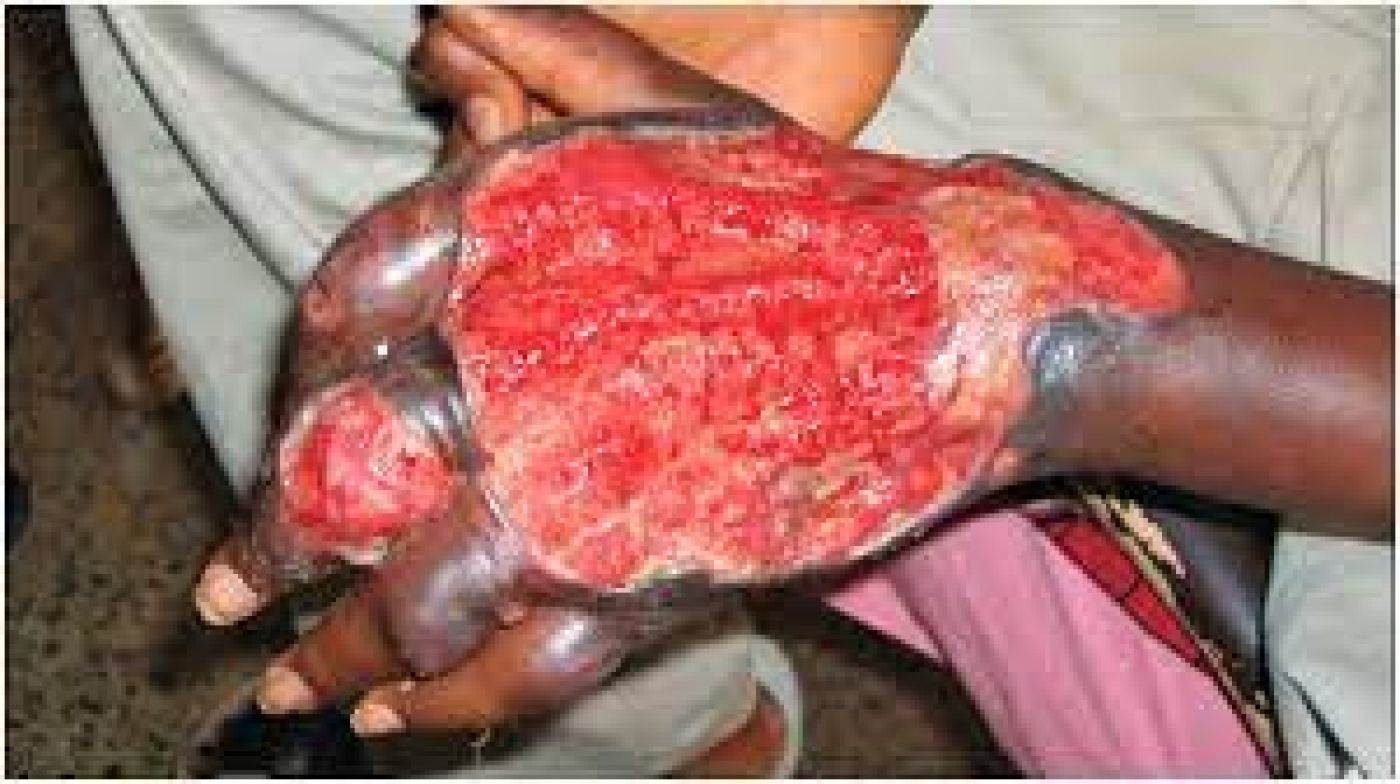He noted that despite the increase in prevalence, BU was one of the least studied tropical diseases, particularly in Nigeria where the disease was first discovered in 1967.
“Buruli ulcer generally begins as a painless dermal papule or subcutaneous edematous nodule, which, over a period of weeks to months, breaks down to form an extensive necrotic ulcer with undermined edges,” he explained.
He, however, said the condition was easily treatable with a prolonged course of antibiotics and surgical debridement.
According to him, early identification and treatment are key as lesions heal with scarring that can be a significant source of morbidity.
He listed other names for the condition as Bairnsdale ulcer, Daintree ulcer, Mossman ulcer, and Searl ulcer
Adebayo noted that BU cases were mostly found in the southern and southeastern regions and across other parts of Nigeria.
He noted that transmission often grew at temperatures between 29–33 °C (Mycobacterium tuberculosis grows at 37 °C) and needed a low (2.5%) oxygen concentration.
He added that the organism often produced a unique toxin – mycolactone – which usually caused tissue damage, thereby inhibiting the immune response.
“Buruli ulcer often starts as a painless swelling (nodule), a large painless area of induration (plaque), or a diffuse painless swelling of the legs, arms, or face (oedema).
“The disease may progress with no pain and fever. Without treatment or sometimes during antibiotics treatment, the nodule, plaque or oedema will ulcerate within four weeks. Bone is occasionally affected, causing deformities,” he explained.
He said that the disease had been classified into three categories of severity: Category I; single small lesion (32%), Category II; non-ulcerative and ulcerative plaque and oedematous forms (35%), and Category III; disseminated and mixed forms such as osteitis, osteomyelitis and joint involvement (33%).
“Lesions frequently occur in the limbs: 35 per cent on the upper limbs, 55 per cent on the lower limbs, and 10 per cent on the other parts of the body,” he said.
Adebayo, however, advised health workers to be careful in the diagnosis of BU in patients with lower leg lesions to avoid confusion with other causes of ulceration such as diabetes and others.
“In most cases, experienced health professionals in endemic areas can make a reliable clinical diagnosis, but training is essential,” he advised.
The World Health Organisation, in a report says at least 33 countries with tropical, subtropical, and temperate climates have reported Buruli ulcers in Africa, South America, and Western Pacific regions.
Source: HealthWise







